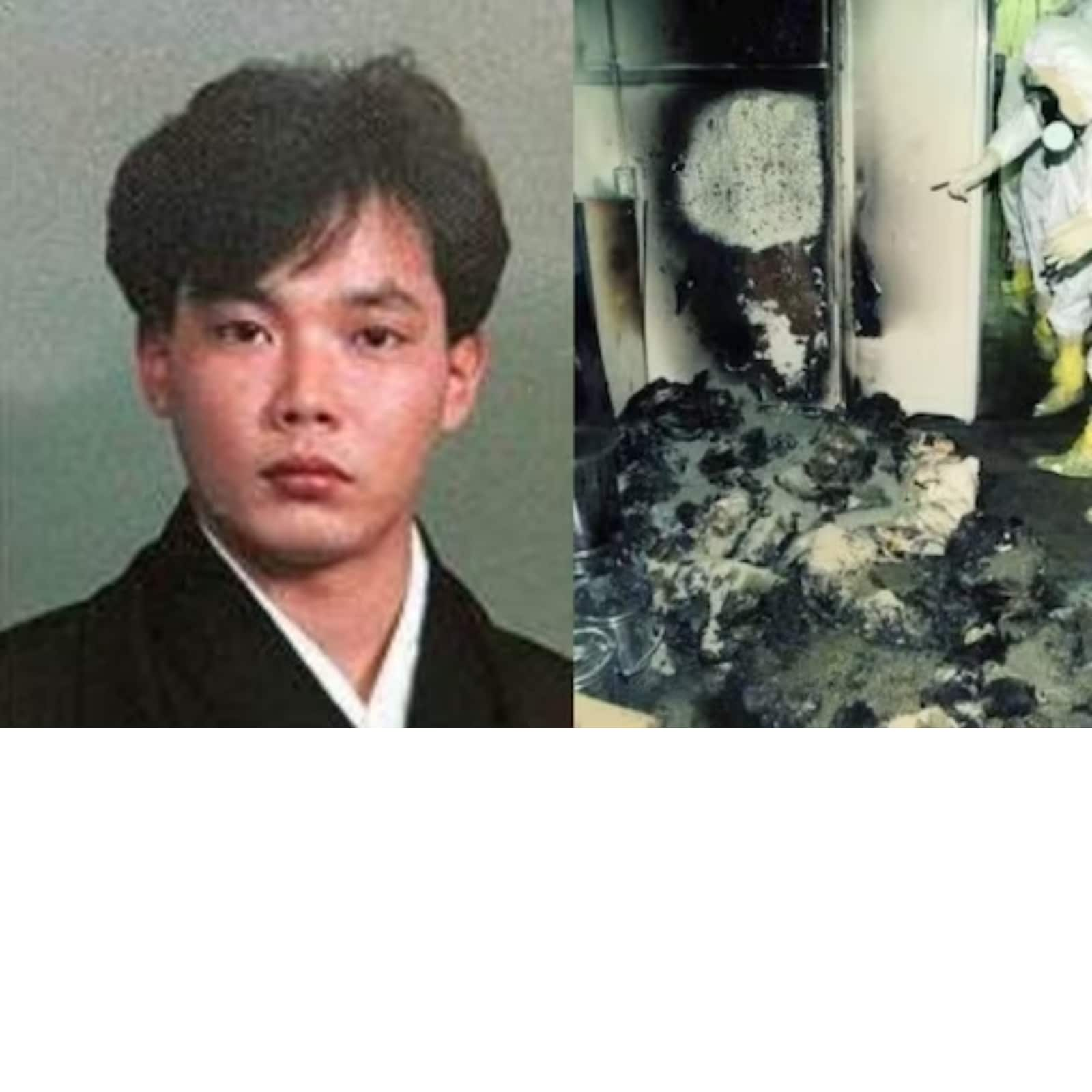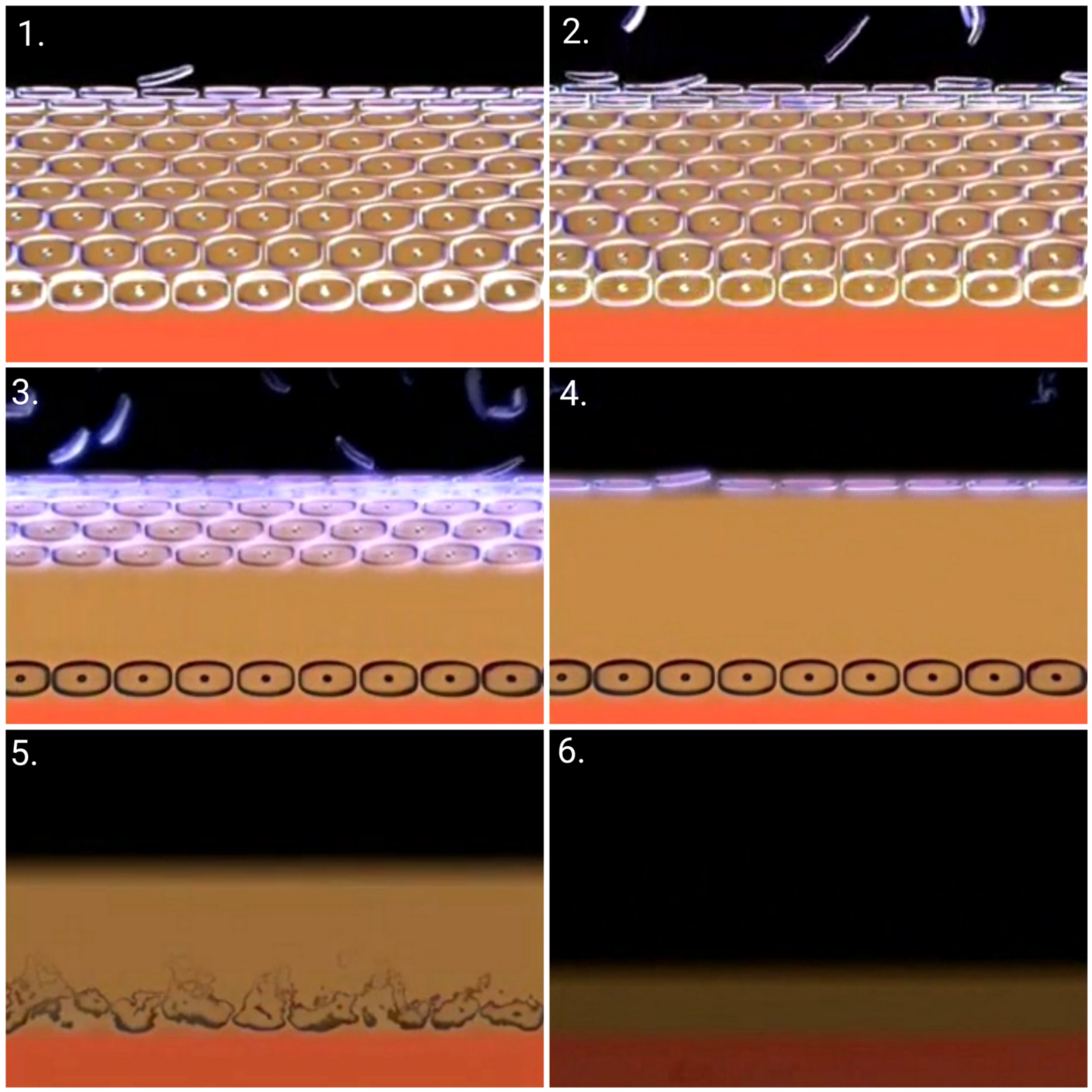Exploring Hisashi Ouchi: The Tragic Story Behind The Photos
Alright folks, let’s dive into something that’s both haunting and deeply impactful. Hisashi Ouchi is a name you might not have heard before, but his story is one of the most heart-wrenching tales of human resilience and tragedy in modern history. We’re not just talking about a random guy here; Hisashi’s life—and death—became a symbol of the devastating effects of radiation exposure. This is real life, not some sci-fi movie plot twist. So, buckle up because this journey will leave you speechless.
You’ve probably seen those chilling photos of Hisashi Ouchi lying in a hospital bed, connected to tubes and machines, his body ravaged by radiation. They’re images that stick with you, even if you don’t fully understand what happened. But trust me, the story behind those photos is even more tragic than the visuals suggest. It’s not just a tale of medical science or nuclear disasters; it’s also about humanity, bravery, and the price we pay for progress.
Now, before we get too deep into the rabbit hole, let’s set the stage. This isn’t just another historical event or a distant tragedy. Hisashi Ouchi’s story is a wake-up call for all of us. It reminds us of the dangers lurking in the shadows of scientific advancements and the sacrifices made by ordinary people when things go horribly wrong. Ready? Let’s explore the life, the incident, and the legacy of Hisashi Ouchi.
- When Is Kat Timpf Baby Due Date The Countdown Begins
- Hd Hub 4 U Movie Download Your Ultimate Guide To Streaming And Downloading Movies
Table of Contents
- Biography of Hisashi Ouchi
- The Incident That Changed Everything
- Understanding Radiation Effects
- His Medical Battle
- The Human Side of the Story
- The Impact of the Photos
- Scientific Lessons Learned
- Global Response and Awareness
- Hisashi’s Legacy
- Conclusion: What We Can Learn
Biography of Hisashi Ouchi
Early Life and Career
Let’s rewind the clock and take a peek at who Hisashi Ouchi was before the fateful day that changed everything. Born in Japan, Hisashi was an ordinary guy with a job that seemed routine at first glance. He worked at the JCO nuclear fuel processing plant in Tokaimura, a place where few people outside the industry knew much about. But what made Hisashi special wasn’t just his work ethic—it was his dedication to his family and community.
Here’s a quick snapshot of Hisashi’s life:
| Full Name | Hisashi Ouchi |
|---|---|
| Age at Time of Incident | 35 years old |
| Occupation | Worker at JCO nuclear fuel processing plant |
| Marital Status | Married |
| Children | One child |
See, Hisashi wasn’t just a worker; he was a dad, a husband, and a friend. His life was filled with the same hopes and dreams as anyone else’s. But fate had other plans.
- Movie Rulz 3 The Ultimate Guide To The Film Thats Taking Over The World
- Veganovies The Ultimate Guide To Plantbased Movie Nights
The Incident That Changed Everything
On September 30, 1999, everything went south at the JCO plant. A criticality accident occurred when workers improperly mixed uranium solutions, causing a chain reaction. Hisashi and two of his colleagues were directly exposed to lethal doses of radiation. This wasn’t just any accident—it was one of the worst nuclear incidents in history, ranking as a Level 4 on the International Nuclear Event Scale.
Now, here’s where it gets heavy. Hisashi absorbed a staggering dose of radiation—about 17 sieverts—far beyond the lethal threshold of 5 sieverts. To put that into perspective, it’s like being hit by an invisible bullet train that tears apart your cells from the inside out. But hey, we’ll dive deeper into the science later. For now, just know that this was the beginning of Hisashi’s battle against unimaginable odds.
Understanding Radiation Effects
What Happens When You’re Exposed to Radiation?
Radiation exposure isn’t like getting a sunburn or catching a cold. It’s brutal and unforgiving. When Hisashi absorbed those 17 sieverts, his body started shutting down almost immediately. His DNA was shredded, his organs began failing, and his immune system was obliterated. It’s like your body becomes its own worst enemy, attacking itself from the inside.
Here’s a breakdown of the effects:
- Burns and Skin Damage: Hisashi’s skin literally melted off in some areas.
- Blood Cell Destruction: His bone marrow stopped producing essential blood cells.
- Organ Failure: His internal organs began to fail one by one.
- Extreme Pain: Imagine enduring constant, excruciating pain with no relief.
And folks, this wasn’t happening overnight. It was a slow, agonizing process that tested Hisashi’s strength and resilience every single day.
His Medical Battle
After the accident, Hisashi was rushed to the University of Tokyo Hospital, where doctors fought tirelessly to save his life. They performed skin grafts, blood transfusions, and experimental treatments, all in an attempt to stabilize him. But let’s be real—this was a battle they knew they might lose from the start.
Hisashi endured 83 days of unimaginable pain and suffering. He underwent multiple surgeries and was kept alive through life support systems. His body was so damaged that even the simplest procedures became monumental challenges. The medical team worked around the clock, trying everything they could think of, but in the end, Hisashi’s injuries were simply too severe.
The Human Side of the Story
Let’s not forget that behind all the medical jargon and scientific data, there was a human being—a husband, a father, a son. Hisashi’s story isn’t just about numbers and statistics; it’s about the emotional toll on his family and friends. Can you imagine watching someone you love suffer like that? It’s a pain no one should have to endure.
His wife and child were by his side as much as possible, offering love and support during his final days. It’s a reminder that even in the darkest moments, human connection can bring light and comfort. But it’s also a stark reminder of the sacrifices made by ordinary people in extraordinary circumstances.
The Impact of the Photos
Now, let’s talk about those infamous photos. They weren’t just images; they were a window into the reality of nuclear disasters. The world saw Hisashi’s suffering, and it sparked conversations about safety protocols, nuclear energy, and the ethics of scientific experimentation. These photos weren’t just shocking—they were a call to action.
But here’s the thing: the photos also raised ethical questions. Was it right to share such intimate moments of someone’s suffering? Did it exploit Hisashi’s tragedy for public consumption? These are tough questions that still linger today.
Scientific Lessons Learned
Improving Safety Measures
Hisashi’s tragedy wasn’t in vain. It led to significant improvements in nuclear safety protocols worldwide. Plants implemented stricter guidelines, better training, and enhanced monitoring systems. Governments and organizations began taking nuclear safety more seriously, realizing that even minor mistakes can have catastrophic consequences.
Scientists also gained valuable insights into the effects of radiation on the human body. While it’s a somber lesson, it’s one that has saved countless lives in the years since.
Global Response and Awareness
Hisashi’s story didn’t just stay within the borders of Japan. It resonated globally, sparking debates about nuclear energy, safety standards, and the ethical implications of scientific research. Activists used his case to advocate for stricter regulations and increased transparency in the nuclear industry.
But here’s the kicker: it also brought attention to the human cost of such incidents. Hisashi’s suffering became a symbol of the need for compassion and empathy in the face of technological advancement.
Hisashi’s Legacy
Even after Hisashi’s passing, his story continues to inspire change. It’s a reminder of the importance of safety, responsibility, and humanity in the pursuit of progress. His legacy lives on in the advancements made in nuclear safety and the awareness raised about the dangers of radiation exposure.
Hisashi’s name may not be a household one, but his impact is felt in every nuclear plant, every safety protocol, and every conversation about the ethics of science. He may have lost his battle, but his story continues to win wars against complacency and ignorance.
Conclusion: What We Can Learn
Alright, so we’ve covered a lot of ground here. From Hisashi’s early life to the tragic accident, his medical battle, and the global impact of his story, we’ve seen how one person’s tragedy can lead to significant change. Hisashi Ouchi’s legacy is a powerful reminder of the importance of safety, responsibility, and humanity in the face of scientific advancement.
So, what can we take away from all this? First, never underestimate the power of safety protocols. Second, remember that behind every statistic and headline is a human being with a story. And finally, let’s honor Hisashi’s memory by continuing to push for a safer, more compassionate world.
Now, it’s your turn. Share this story, leave a comment, or explore more articles on this site. Together, we can keep Hisashi’s legacy alive and ensure that his suffering wasn’t in vain. Thanks for reading, folks. Let’s keep the conversation going. Cheers!
- Movie Rulzcom The Ultimate Streaming Hub For Movie Enthusiasts
- Movierulz App Download Your Ultimate Guide To Streaming Movies In 2023

Exploring The Tragic Story Behind Hisashi Ouchi Pictures A Detailed Look

Understanding The Tragic Story Behind Hisashi Ouchi Photos

Unveiling The Tragic Story Behind The Hisashi Ouchi Image